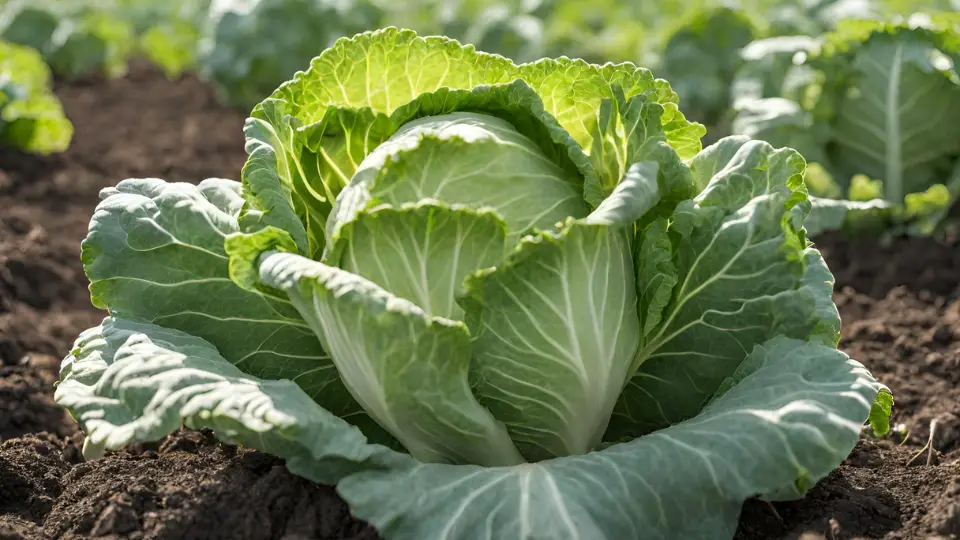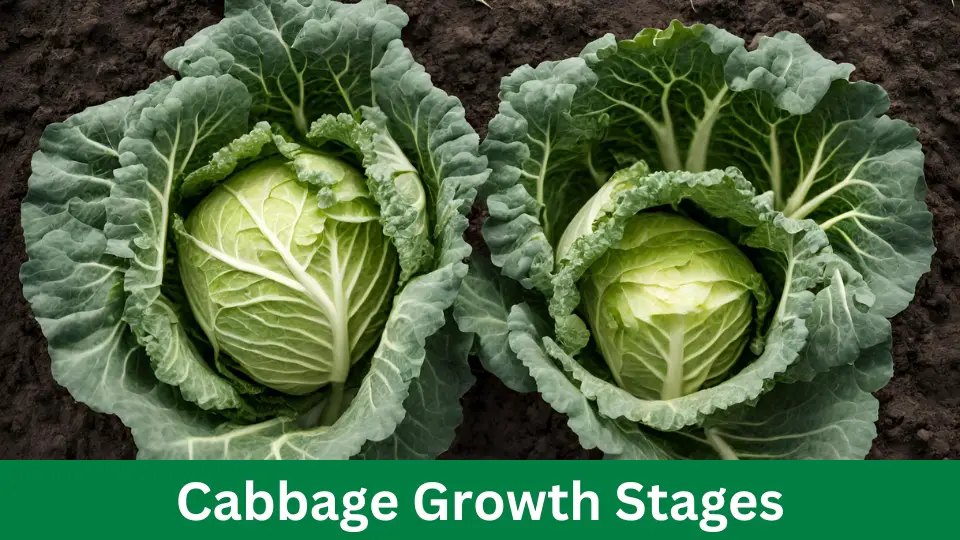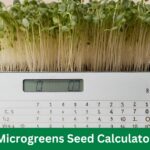Cabbage growth stages include germination, seedling, vegetative growth, and heading and maturity. Each stage requires specific care and attention to ensure healthy plant development.
Understanding growth stages is essential for successful cabbage cultivation. Cabbage growth is a fascinating journey that involves distinct phases, from the initial germination of seeds to the full development of the head. Throughout these stages, various factors, such as water, sunlight, and soil nutrients, play crucial roles in determining plant health and yield.
Farmers and gardeners can optimize their cultivation practices to support robust cabbage growth and enjoy a bountiful harvest. This is done by gaining insight into the different growth stages. Let’s delve deeper into the fascinating journey of cabbage growth and explore each growth stage’s key characteristics and requirements.
Understanding Cabbage Growth Stages
Cabbage growth stages are essential to ensure optimal growth and a successful harvest. From the germination and seedling stage to transitioning to the reproductive stage, each phase plays a crucial role in the cabbage plant’s life cycle. Let’s delve into the vital development stages of cabbage and the factors influencing their growth.

Germination And Seedling Stage
The germination and seedling stage is a cabbage plant’s initial growth phase. It begins with the emergence of the first leaves and continues until the plant develops its first true leaves.
Factors Affecting Germination
Several factors can affect the germination of cabbage seeds, including seed quality, soil temperature and moisture, optimal conditions for seedling growth, and light and water requirements.
Seed Quality
- High-quality seeds with reasonable germination rates are crucial for successful growth.
- Seeds should be stored in a cool, dry place to maintain viability.
Soil Temperature And Moisture
Optimal soil temperature and moisture levels are critical for successful seed germination. The ideal temperature for cabbage seed germination is between 60°F and 70°F.
Optimal Conditions For Seedling Growth
Seedlings require adequate light and water to grow. Providing the right environmental conditions is essential for healthy seedling development.
Vegetative Growth And Development
The cabbage plant grows leaves during this stage and establishes a robust root system.

Leaf Formation And Photosynthesis
Leaf formation is crucial to vegetative growth, as it directly impacts the plant’s ability to photosynthesize and produce energy.
Importance Of Nutrient Uptake
Nutrient uptake is vital for healthy and vigorous vegetative growth, making proper soil fertility and nutrient availability essential.
Managing pests and Diseases
To prevent vegetative growth setbacks, managing pests and diseases effectively is essential. Regular pruning and thinning can improve growth by enhancing air circulation and reducing plant competition.
Transition To the Reproductive Stage
As the cabbage plant matures, it reaches the critical stage of transitioning to reproductive growth, marked by the potential onset of bolting.
Environmental Triggers For Bolting
- Day length and temperature are vital environmental triggers for the bolting process.
- Proper care and maintenance can help prevent premature bolting and extend the vegetative growth phase.
Flowering And Pollination Stage
Flowering marks the beginning of the pollination stage, where the role of pollinators becomes essential for successful seed production.
Seed Production Considerations
For cabbage growers interested in seed production, it’s essential to allow the plant to complete its life cycle and determine the optimal time for harvest.
Harvesting And Post-harvest Tips
Understanding the signs of maturity is essential for determining the right time to harvest cabbage.
Determining Maturity For Harvest
Visual and tactile cues, such as firmness and color of the heads, provide valuable indicators to determine maturity for harvesting.
Post-harvest Storage Conditions
Proper post-harvest storage conditions are essential to maintain the quality and shelf-life of harvested cabbage.
Preservation And Processing Options
Various preservation and processing methods, such as fermentation and pickling, freezing, and canning, can extend the shelf-life of cabbage and offer versatility in culinary applications.
Frequently Asked Questions Of Cabbage Growth Stages
What Are The Key Growth Stages Of Cabbage?
Cabbage has five main growth stages: germination, seedling, vegetative, heading, and harvest. Each stage requires specific care and attention to ensure optimal growth and yield.
How Can I Identify When Cabbage Is Ready For Harvest?
Cabbage is ready for harvest when the heads feel firm and dense to the touch. The outer leaves should be tightly wrapped around the head. Additionally, the head should be around 6-8 inches in diameter, depending on the variety.
What Are The Best Practices For Nurturing Cabbage During The Seedling Stage?
During the seedling stage, providing cabbage with ample sunlight, consistent watering, and protection from pests and harsh weather conditions is crucial. Additionally, thinning seedlings to promote more substantial growth is essential for healthy cabbage plants.
Conclusion
In understanding cabbage growth stages, it’s clear that patience and care are essential. Gardeners can ensure successful growth by recognizing the distinct phases and providing attention. With proper knowledge and nurturing, one can witness the transformation from seedling to mature cabbage, reaping the benefits of their hard work and dedication.
Video Source Link: https://www.youtube.com/watch?v=vD3OumfxTe4



